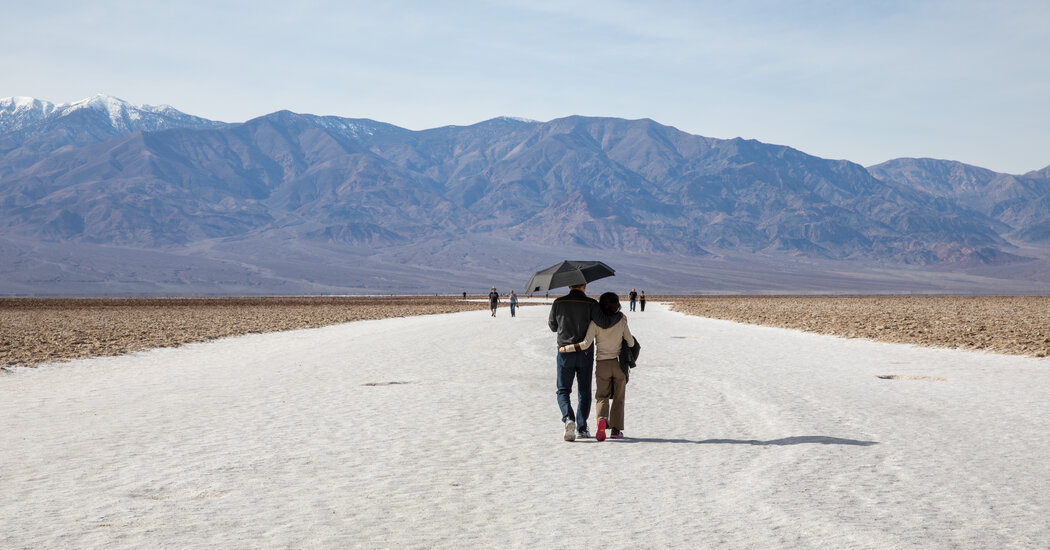Hottest, driest, lowest: Those three words are repeated often by rangers to describe Death Valley National Park, which straddles the California and Nevada borders and is the largest national park outside of Alaska. At 3.4 million acres, it is known for its blast-furnace summers, when temperatures have climbed as high as 134 degrees Fahrenheit.
“It’s just the die-hards here then,” said a park shopkeeper, bagging my souvenir T-shirt on a trip to the park in January. “You get exfoliated by blowing sand.”
But less severe seasons allow visitors to appreciate the beauty of Death Valley, from snow-capped peaks that loom over salt flats to winding canyons with polished rock walls and volcanic hills splashed with pastel patches of minerals.
Angling to avoid extremes, I chose January from the park weather chart, when chilly 40-degree nights warm to perfect-for-hiking highs of 67. Most visitors prefer the warmer months of March and April, when park popularity peaks, with highs ranging from 82 to 90 degrees and lows running from 55 to 62. Summer is slowest, when peak temperatures hit 110 degrees and higher.
If talk in Death Valley often concerns the weather, it’s because climactic conditions are crucial to understanding the place. Though its landscape exposes ancient elements of change through eons of geologic uplift and erosion, it’s still shaped by day-to-day conditions. Last year’s flash floods have closed many roads in the north of the park, though the southern half, where most of its icons are — including salt flats, sand dunes and striated badlands — remains open.
On average, fewer than two inches of rain fall here annually, stimulating wildflower blooms in the lower elevations from mid-February to mid-April. Recent rains, including January’s storms, have fans wondering whether this will be a “superbloom” season of mass flowering.
“We expect this year will probably be better than average,” said Abby Wines, the public affairs officer for the park. The last superbloom, she explained, was in 2016, when flowers were blooming by Jan. 1, which was not the case this year. “It’s a rare enough event that there isn’t an exact recipe,” she said.
Van life in the desert
For all its extremes, Death Valley is not middle-of-nowhere remote but, rather, a mere two hours’ drive from Las Vegas.
The ultimate in artificial, Las Vegas is an odd base from which to launch a foray into nature. But not only is Sin City on the edge of many parks,…
Click Here to Read the Full Original Article at NYT > Travel…
